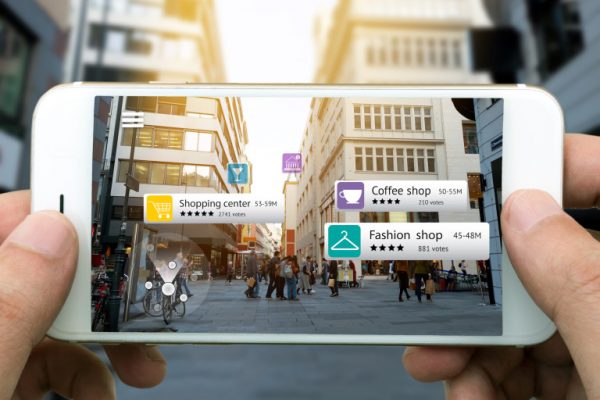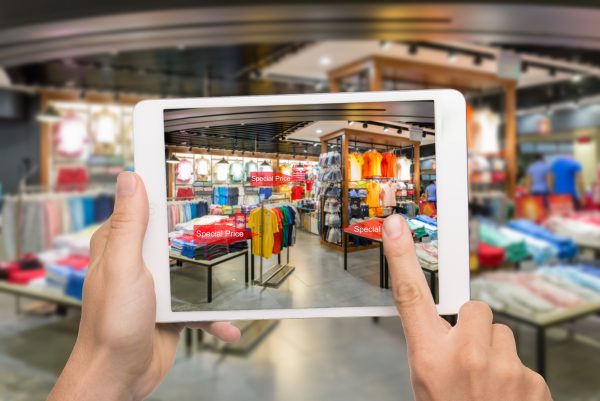100 Million Customers to Shop Using Augmented Reality by 2020
Virtual reality and augmented reality technologies have already had a major impact on the retail sector. Across board, retailers are figuring ways of tapping into the potential of these immersive technologies to ramp up sales and improve the quality of the customer experience. That transformation is about to step up according to data from research and advisory firm Gartner which predicts that some 100 million global consumers will shop using augmented reality (AR) both online and in-store by 2020.

Gartner believes that both technologies will have a transformative impact on the consumer experience by enabling buyers to visualize the products that they about to purchase in different settings and also by individualizing the retailer’s product and service offerings.
Gartner has also noted that both virtual reality and augmented reality will rely heavily on the revolutionary 5G network to elevate the customer experience both inside and outside the retail stores. ‘
As online shopping continues to permeate the global shopping experience and as new technologies create new shopping experiences outside the traditional brick-and-mortar retail stores, many retailers are finding it hard to justify the investment in costly physical stores and are working more towards taking control of the fulfillment and return processes for cross-channel execution.
Consumers are also gradually and increasingly getting to define the value they get from retailers by the experience that they get from these retailers. Consumers are becoming a lot more sophisticated and discerning. The shopping experience is becoming as important as the product itself. Due to these pressures and a hyper-competitive landscape, many retailers are shifting towards AR and VR as a means to providing their customers with a unified retail experience inside and outside the stores.
The Gartner survey has also indicated that by 2020, some 46% retailers are planning to deploy either virtual reality or augmented reality solutions to satisfy customer service experience requirements. The Gartner analysis suggests that both AR and VR technologies have the potential to help retailers individualize their product offerings while enabling customers to visualize products in multiple settings. They therefore create a convergence point between customers and retailers that helps provide a smooth experience for both parties.

Gartner also states that the use of the immersive virtual reality interfaces also enable forward-looking retailers to create task efficiencies or cut down on costs that are associated with the design of new products. The immersive experience is also capable of enhancing the dissemination and digesting of information via advanced graphical visualization as well as other simulation technologies.
The impact of both virtual reality and augmented reality will be transformative. For many retailers, VR can be an extension of the brand experience which can be deployed in engaging customers in immersive environments and driving revenues.
Some retailers have already put both AR and VR into good use. A perfect example is IKEA with its Place App which allows its customers to virtually place IKEA products in spaces to determine if they will be a right fit. Augmented reality can also serve an after-sale function: they can be used outside of the retail stores to improve customer loyalty and increase customer satisfaction. Other pilot implementations of immersive technologies in retail include the Tesco virtual reality tours, Alibaba’s full virtual reality shopping experience as well as Adidas’ virtual reality video that was created to promote the sportswear’s clothing collection.
The 5G Potential for Immersive Technologies and Retail
The research and advisory firm also believes that the roll-out of the next-gen 5G networks in the next few years represents a golden opportunity that will accelerate the adoption of both AR and VR in retail.
According to Gartner’s recent 5G enterprise survey, the augmented reality and virtual reality applications of 5G networks offer the best prospects for becoming key revenue drivers across all respondent and use-cases. Gartner believes that 5G capabilities will provide support for multiple use-cases including shorter download times, shorter setup times, real-time rendering for immersive videos as well as the extension of brands and the shopping experience beyond the retail outlets.
The research and advisory firm expects that 5G implementation as well as the deployment of both AR and VR in retail stores will lead to a transformation in both customer engagement and the entire product management cycle for brands. 5G networks will enable an optimization of warehouse resources and also boost store traffic analytics. In terms of practical shopping experience, for example, 5G networks will enable beacons in stores to communicate with the shoppers’ AR-enabled smartphones.
https://virtualrealitytimes.com/2019/04/03/100-million-customers-to-shop-using-augmented-reality-by-2020/https://virtualrealitytimes.com/wp-content/uploads/2019/04/AR-Shopping-600x362.jpghttps://virtualrealitytimes.com/wp-content/uploads/2019/04/AR-Shopping-150x90.jpgAugmented RealityShoppingTechnologyVirtual reality and augmented reality technologies have already had a major impact on the retail sector. Across board, retailers are figuring ways of tapping into the potential of these immersive technologies to ramp up sales and improve the quality of the customer experience. That transformation is about to step...Sam OchanjiSam Ochanji[email protected]EditorVirtual Reality Times - Metaverse & VR

